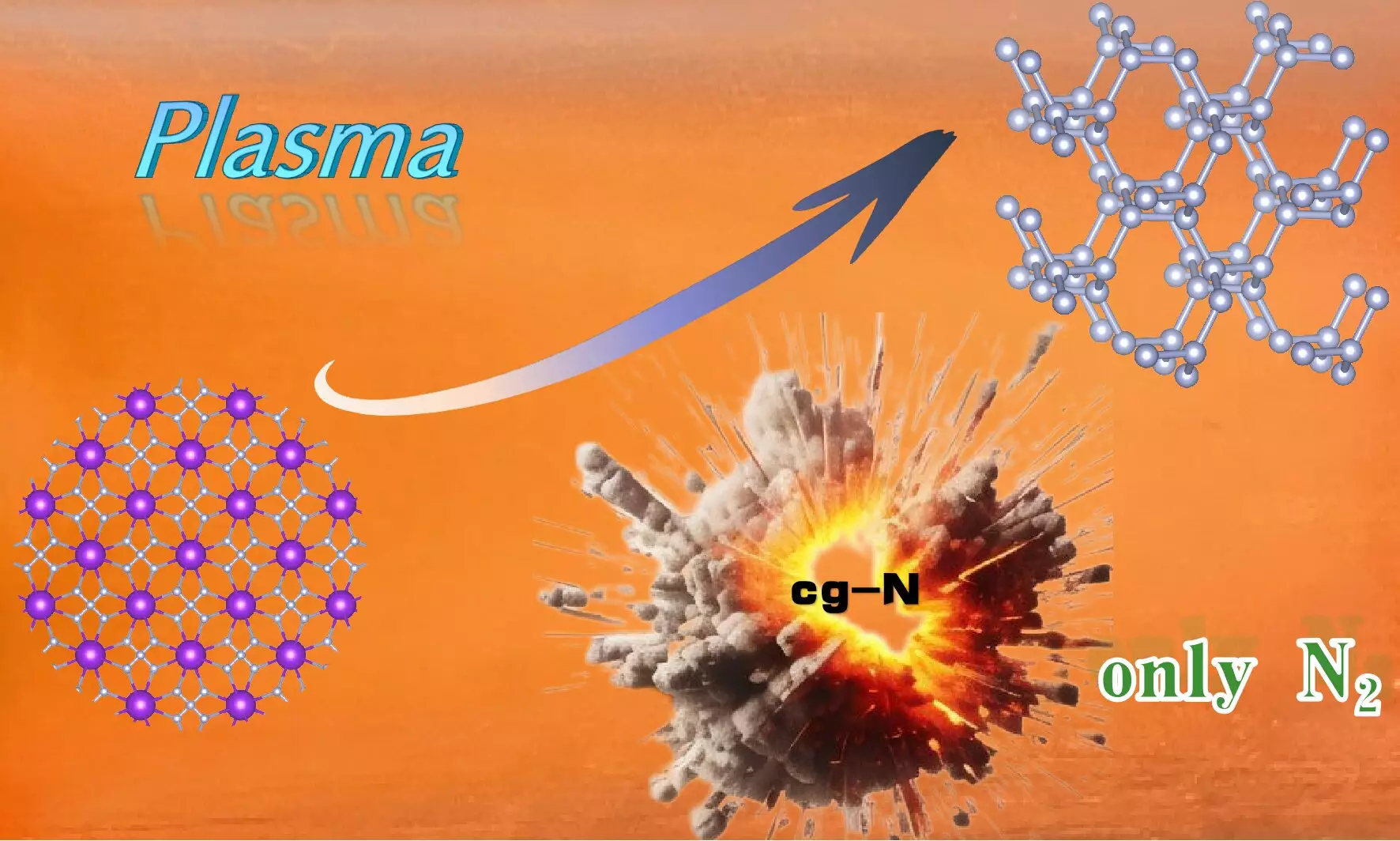Recent advancements in the field of materials science have unveiled the successful synthesis of cubic gauche nitrogen (cg-N), a high-energy-density material, through a groundbreaking technique pioneered by a research team led by Prof. Wang Xianlong at the Hefei Institutes of Physical Science, affiliated with the Chinese Academy of Sciences. This research, highlighted in the prestigious journal Science Advances, marks a significant stride in the endeavor to create energy-dense materials that operate safely and efficiently under atmospheric conditions.
The researchers utilized plasma-enhanced chemical vapor deposition (PECVD), a method known for its ability to foster high-quality thin films and advanced materials, to convert potassium azide (KN3) into cg-N. This approach not only highlights the team’s innovative spirit but also their commitment to sustainability; by employing KN3, which possesses lower toxicity compared to other precursors, they have mitigated some of the environmental and safety concerns typically associated with high-energy material synthesis.
Cubic gauche nitrogen is not merely another derivative of nitrogen. Its unique structure, characterized by nitrogen atoms linked by single N-N bonds, gives it properties reminiscent of diamonds—making it a fascinating subject for both theoretical and practical exploration. One of the most compelling attributes of cg-N is its high-energy density, which means that it has the potential to store and release energy efficiently. Moreover, its decomposition results solely in gaseous nitrogen, eliminating the hazardous byproducts often associated with traditional explosives or propellants.
Given these characteristics, the urgency to develop reliable synthesis methods for cg-N has been underscored by ongoing research. The Hefei Institutes team employed advanced first-principles calculations to determine the stability of the cg-N surface under varying conditions of pressure and temperature. These calculations revealed the critical challenge: cg-N exhibited surface instability at low pressures, prompting the researchers to theorize a method for stabilizing the material by saturating suspension bonds and enhancing charge transfer.
The results of this groundbreaking research demonstrate significant thermal stability, as confirmed by thermogravimetric-differential scanning calorimetry (TG-DSC) tests. The synthesized cg-N displayed robust properties up to 760 K, ultimately leading to rapid thermal decomposition beyond this threshold—a crucial factor for its potential applications in fields such as aerospace and advanced energy systems.
The team’s work not only showcases a new paradigm for synthesizing high-energy-density materials at atmospheric pressure but also opens new avenues for future research into safe, efficient alternatives. As the demand for energy-dense materials continues to grow, this research provides a promising foundation for ongoing innovation in materials science. With the potential to inspire further developments, the synthesis of cubic gauche nitrogen may well be a key to unlocking new technologies that can harness energy more effectively and sustainably.
The study is a portent of changes ahead in the world of materials science, marking an important intersection between theoretical research and practical application. As the field evolves, it is clear that the journey to perfecting high-energy-density materials like cg-N is just beginning, paving the way for safer and more efficient energy solutions in the future.

